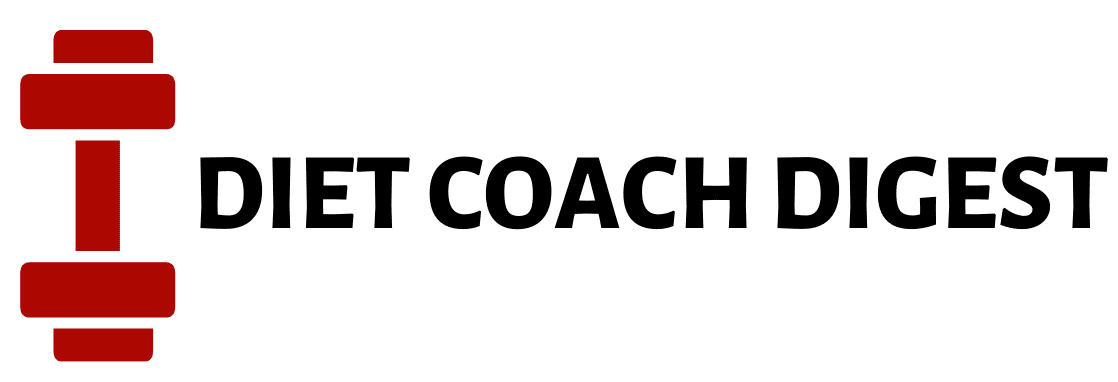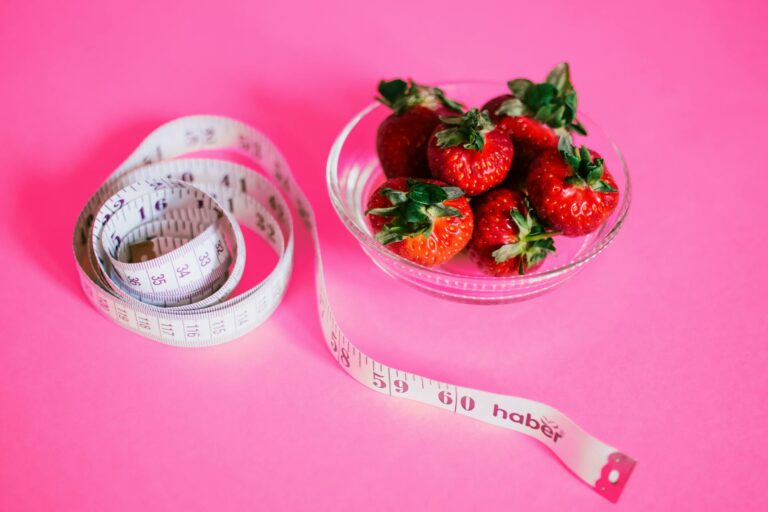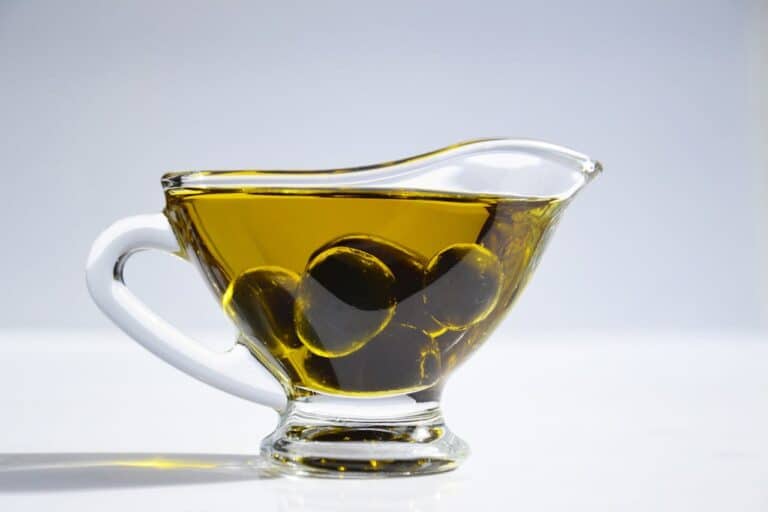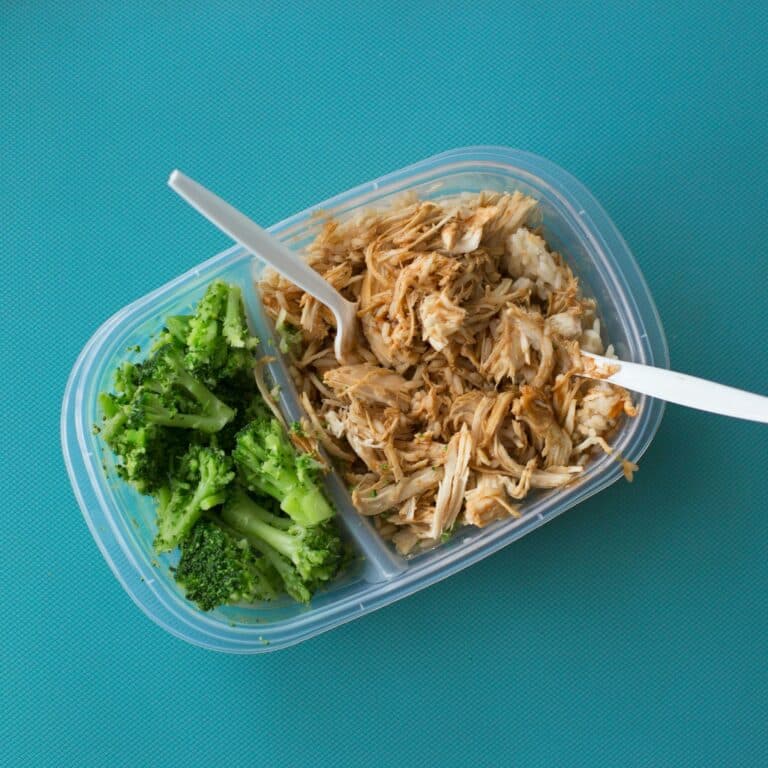Fast & Healthy Weight Loss Recipes: Simple Meals Under 400 Calories
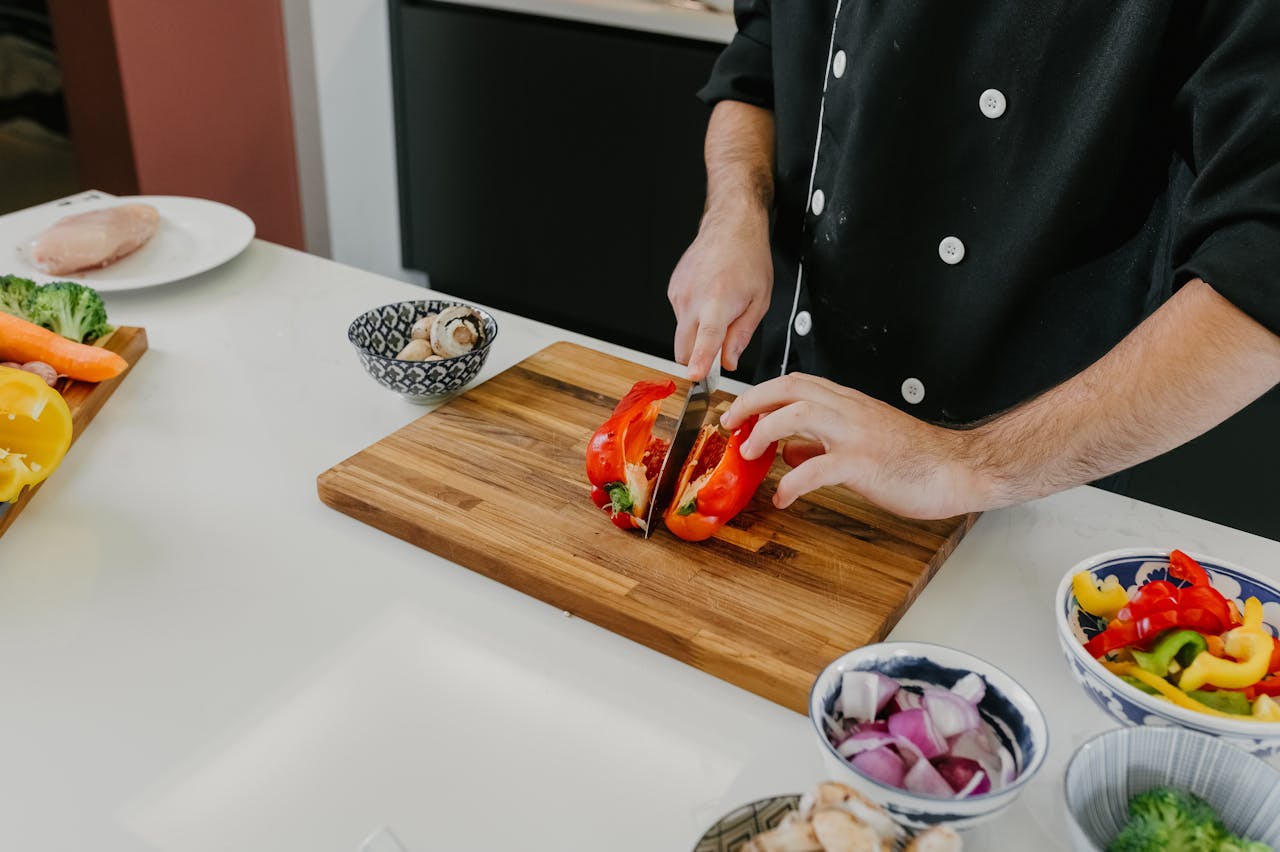
- Should You Train To Muscle Failure Every Set? What You Need To Know - March 4, 2025
- Nutrition in a Hurry: Top Post-Workout Snacks for Active People - February 20, 2025
- 15 Healthy Meal Prep Recipes: Your Weight Loss Made Easy - February 18, 2025
You’ll achieve your weight loss goals faster with these nutrient-dense recipes that keep meals under 400 calories while maximizing flavor and satisfaction. Start your day with protein-packed breakfast bowls combining steel-cut oats, Greek yogurt, and antioxidant-rich berries. For lunch, try Mediterranean-inspired salads with lean proteins and complex carbs. Dinner options include hearty vegetable stews, one-pan quinoa casseroles, and Asian-inspired stir-fries loaded with non-starchy vegetables. Strategic meal planning and pre-portioned snacks like roasted chickpeas and dark chocolate with berries help maintain your caloric deficit. Discover how these simple, nutritious meals can transform your weight loss journey.
Key Takeaways
- Greek yogurt power bowl with quinoa, chickpeas, and berries delivers 28g of protein while staying under 400 calories.
- One-pan vegetable stir-fry combining tofu, broccoli, and bell peppers creates a satisfying meal under 300 calories.
- Hearty lentil soup with pureed cauliflower base offers high satiety for 200-300 calories per serving.
- Breakfast combinations of steel-cut oats, egg whites, and fresh berries provide metabolism-boosting nutrients within calorie limits.
- Plant-based quinoa casserole with roasted vegetables and chickpeas contains 8-12g of fiber while maintaining low caloric content.
Breakfast Power Bowls
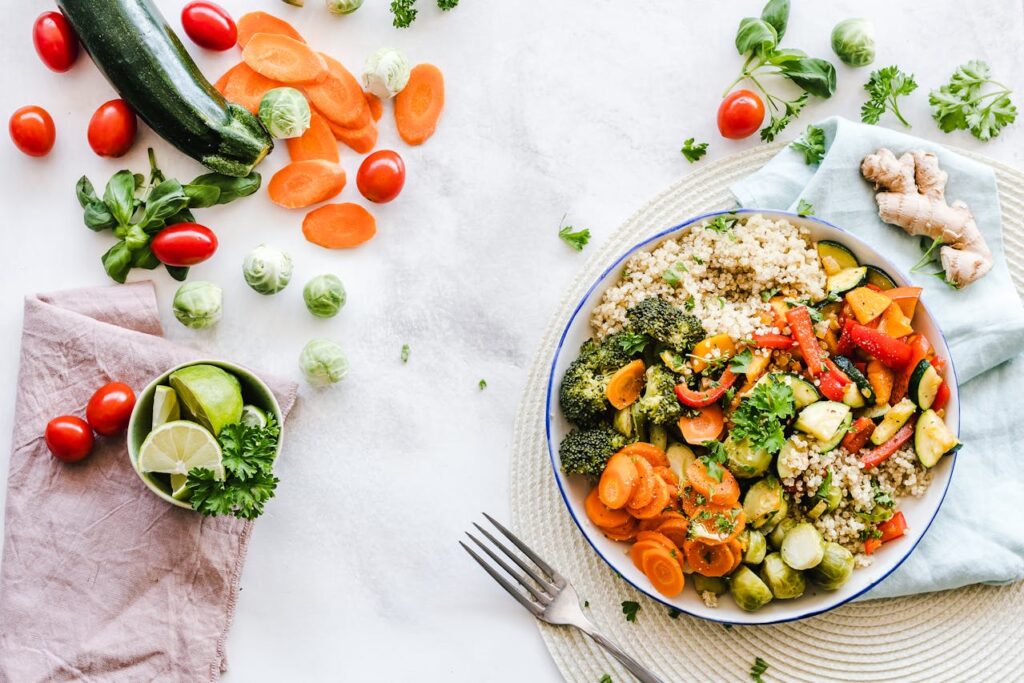
Breakfast power bowls offer an ideal combination of complex carbohydrates, lean protein, and healthy fats to kickstart your metabolism and promote sustainable weight loss. You’ll find these nutrient-dense meals particularly effective when consumed within an hour of waking, as they help stabilize blood sugar levels throughout the morning.
Start your day with protein-packed breakfast bowls combining complex carbohydrates, lean protein, and healthy fats. These nutrient-dense meals can help stabilize blood sugar levels and kickstart your metabolism. Consider options like:
- Steel-cut oats with Greek yogurt and antioxidant-rich berries
- Quinoa bowls with egg whites and fresh fruit
- Chia seed pudding topped with nuts and seeds
For optimal results, consume these meals within an hour of waking. The American Heart Association recommends choosing high-fiber ingredients to enhance satiety and prevent overeating throughout the day. Additionally, incorporating high-fiber options can further enhance satiety and prevent overeating throughout the day.
Fresh Mediterranean Salads
Moving from morning to midday meals, Mediterranean salads pack a powerful punch for weight management while delivering robust nutritional benefits. You’ll find these nutrient-dense combinations feature heart-healthy olive oil, fiber-rich vegetables, and lean proteins that help maintain satiety throughout the afternoon.
Create Mediterranean flavors by combining crisp romaine with cherry tomatoes, cucumbers, red onions, and kalamata olives. Add protein through grilled chicken, chickpeas, or wild-caught tuna. For salad variations that stay under 400 calories, measure portions of healthy fats like olive oil (1 tablespoon), feta cheese (1 ounce), or avocado (1/4 fruit). Enhance your salad’s nutritional profile with fresh herbs like oregano, basil, or parsley. These ingredients provide antioxidants while keeping sodium levels in check and supporting your weight loss goals. Additionally, incorporating whole foods into your salad can further boost its nutritional density and help regulate blood sugar levels.
Hearty Soups and Stews
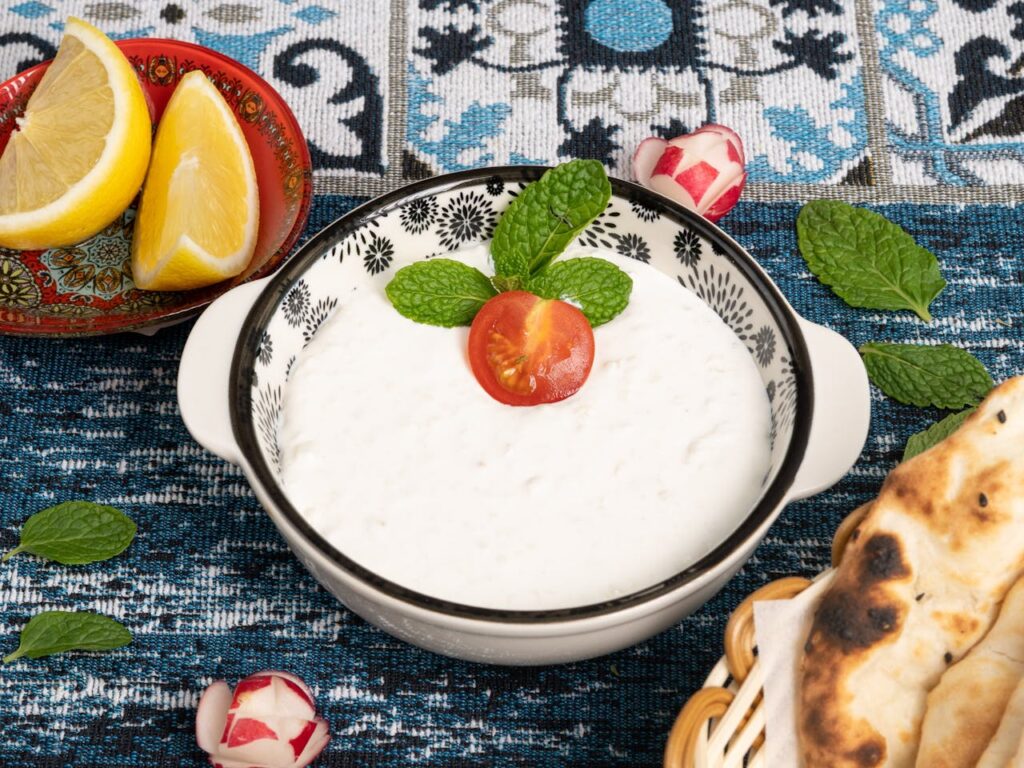
While many dieters overlook soups and stews, these nutrient-rich meals can greatly support your weight loss journey by providing high satiety with fewer calories. You’ll find that incorporating hearty ingredients like lentils, beans, and lean proteins creates filling meals that range from 200-300 calories per serving. To maximize flavor without adding excess calories, focus on flavor enhancements such as herbs, spices, and aromatics. Try adding garlic, ginger, and turmeric to boost both taste and anti-inflammatory properties. You can also increase the volume of your soups by adding non-starchy vegetables like kale, spinach, and mushrooms, which provide essential nutrients while keeping the calorie count low. For thicker stews, use pureed cauliflower or white beans instead of cream to maintain richness without compromising your weight loss goals. Additionally, incorporating fiber-rich foods can help further enhance satiety and support your weight loss efforts.
One-Pan Vegetarian Dinners
Plant-based one-pan dinners offer an efficient way to create nutritious meals that support weight loss through their high fiber and nutrient density. You’ll find that combining protein-rich legumes with complex carbohydrates creates satisfying meals while keeping calories in check.
A vegetable stir fry loaded with broccoli, bell peppers, and snap peas paired with tofu provides a complete protein source at under 300 calories per serving. For heartier options, quinoa casseroles incorporating roasted vegetables and chickpeas deliver sustained energy without excess fat. You can boost flavor without adding calories by using fresh herbs, garlic, and ginger.
These dishes typically contain 8-12 grams of fiber per serving, helping you feel fuller longer while supporting healthy digestion and sustainable weight management. Additionally, incorporating a variety of whole foods and low sugar intake can further enhance gut health, which is essential for overall well-being.
Protein-Packed Lunch Ideas
A protein-rich lunch keeps your metabolism active and hunger at bay during the afternoon hours. You’ll want to combine lean protein sources with complex carbohydrates and healthy fats for ideal satiety. Consider these efficient lunch combinations: pair Greek yogurt with quinoa and roasted chickpeas (28g protein), or try canned tuna with mixed greens and a hard-boiled egg (32g protein).
For plant-based options, combine lentils with brown rice and hemp seeds (24g protein), or layer tempeh with sprouted grain bread and avocado (26g protein). Each of these combinations stays under 400 calories while delivering substantial protein content. Remember to prep your ingredients in advance, storing them in portions that you can quickly assemble during busy weekdays. Additionally, ensuring adequate protein intake can maximize muscle protein synthesis, which is crucial for muscle growth and recovery.
Quick Asian-Inspired Dishes

Traditional Asian cuisines offer numerous low-calorie cooking techniques that you’ll find perfect for weight management. By mastering quick-cooking methods like stir fry, you’ll preserve nutrients while minimizing added fats. Replace traditional rice with cauliflower rice to reduce calories while maintaining authentic flavors.
| Dish Type | Calories | Key Ingredients |
|---|---|---|
| Veggie Stir Fry | 275 | Bok choy, mushrooms, tofu |
| California Sushi Rolls | 250 | Cucumber, avocado, crab |
| Lettuce Wraps | 220 | Ground turkey, water chestnuts |
| Clear Soup | 120 | Miso, seaweed, shiitake |
Create lighter versions of sushi rolls using cucumber wraps instead of rice. Focus on incorporating protein-rich ingredients like tofu, lean meats, and seafood while maximizing vegetable content. Steam, grill, or dry-roast ingredients to maintain flavor without excess oil.
Meal Prep Success Stories
Three inspiring individuals have transformed their health through strategic meal preparation, each losing over 30 pounds within six months. You’ll learn from Sarah’s meal prep strategies, which focused on portion-controlled containers and Sunday batch cooking of lean proteins. David’s success story reveals how preparing breakfast jars and pre-cut vegetables helped him stay consistent with healthy eating despite his demanding work schedule.
Michelle’s transformation showcases the power of planning five days of meals, using a combination of frozen and fresh ingredients to maintain variety while controlling calories. Their success stories share common elements: precise measuring, strategic grocery shopping, and dedicated prep time. You’ll notice they’ve all maintained their weight loss by continuing these proven meal prep habits long-term.
Smart Snacking Options
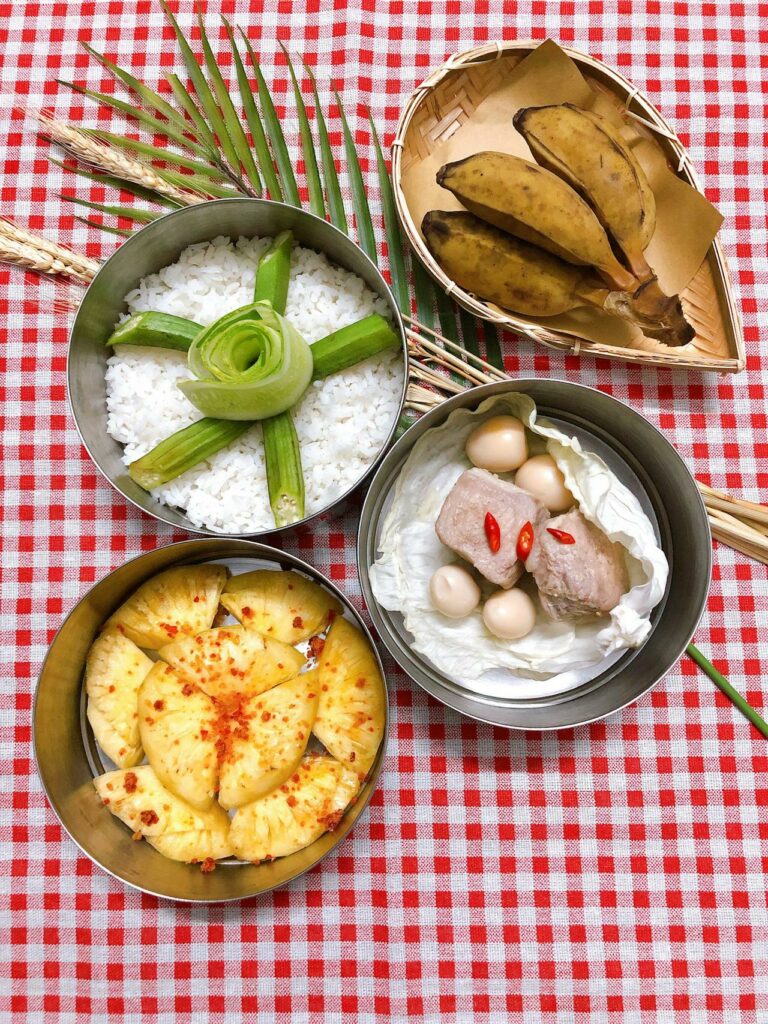
Smart snacking plays an essential role in maintaining steady energy levels and preventing overeating during main meals. By mastering snack portioning and preparing nutrient-dense options, you’ll optimize your weight loss journey while satisfying cravings. Focus on combining protein with complex carbohydrates and healthy fats for sustained satiety.
- Pair crisp apple slices with 2 tablespoons of protein-rich almond butter (190 calories)
- Create healthy dips using Greek yogurt mixed with herbs for raw vegetables (120 calories)
- Combine 1/4 cup of roasted chickpeas with dried seaweed for a crunchy, mineral-rich treat (150 calories)
- Mix 1 ounce of dark chocolate with 1/4 cup of mixed berries for antioxidant benefits (165 calories)
Select pre-portioned containers to maintain serving sizes and store snacks at eye level in your fridge for easy access.
Weekly Meal Planning Guide
Successful weight loss depends heavily on structured meal planning that aligns with your caloric and nutritional goals. By dedicating an hour each weekend to meal planning, you’ll create a strategic framework that prevents impulsive food choices and maintains your caloric deficit.
Start by mapping out your weekly meals, ensuring each day includes lean proteins, complex carbohydrates, and healthy fats. You’ll need a detailed grocery checklist that covers your planned recipes while accounting for portion sizes. Consider batch-cooking several meals on Sunday to streamline your weekday food prep. Stock your kitchen with pre-portioned containers to maintain consistent serving sizes, and keep backup healthy options in your freezer for unexpected schedule changes. This systematic approach transforms sporadic healthy eating into a sustainable weight management routine.
Frequently Asked Questions
How Long Can I Safely Store These Meal-Prepped Dishes in the Refrigerator?
You’ll want to follow food safety guidelines and consume your meal-prepped dishes within 3-4 days of refrigeration. If you need longer storage, freeze portions immediately after preparation.
Can I Substitute Frozen Vegetables for Fresh Ones in These Recipes?
Like winter preserving nature’s bounty, frozen vegetables lock in nutrients at peak freshness. You’ll get similar nutritional benefits to fresh produce, and they’re perfectly fine to substitute in your recipes.
Are These Recipes Suitable for People With Diabetes?
You’ll find these recipes suitable for diabetes management, as they emphasize portion control techniques and diabetes-friendly ingredients. Monitor carbohydrate content and consult your healthcare provider for personalized dietary guidance.
Will These Meals Keep Me Feeling Full Until My Next Meal?
You’ll feel satisfied when your meals include key satiety factors like protein, fiber, and healthy fats, but you’ll need proper portion control to maintain fullness between eating times.
Can I Freeze These Dishes for Longer Storage Periods?
Ever wonder about meal prep mastery? You’ll succeed with proper freezing techniques – most dishes keep well for 3-6 months when stored in airtight storage containers. Just avoid freezing meals containing raw vegetables.
Summary
You’re now equipped with an incredible arsenal of sub-400 calorie recipes that’ll revolutionize your weight loss journey. These scientifically-portioned meals deliver ideal macro ratios while slashing hundreds of excess calories from your daily intake. By incorporating these nutrient-dense, portion-controlled dishes into your weekly meal plan, you’ll create a sustainable 500-750 calorie daily deficit – the sweet spot for healthy, maintainable weight loss of 1-2 pounds per week.
Table of Contents
